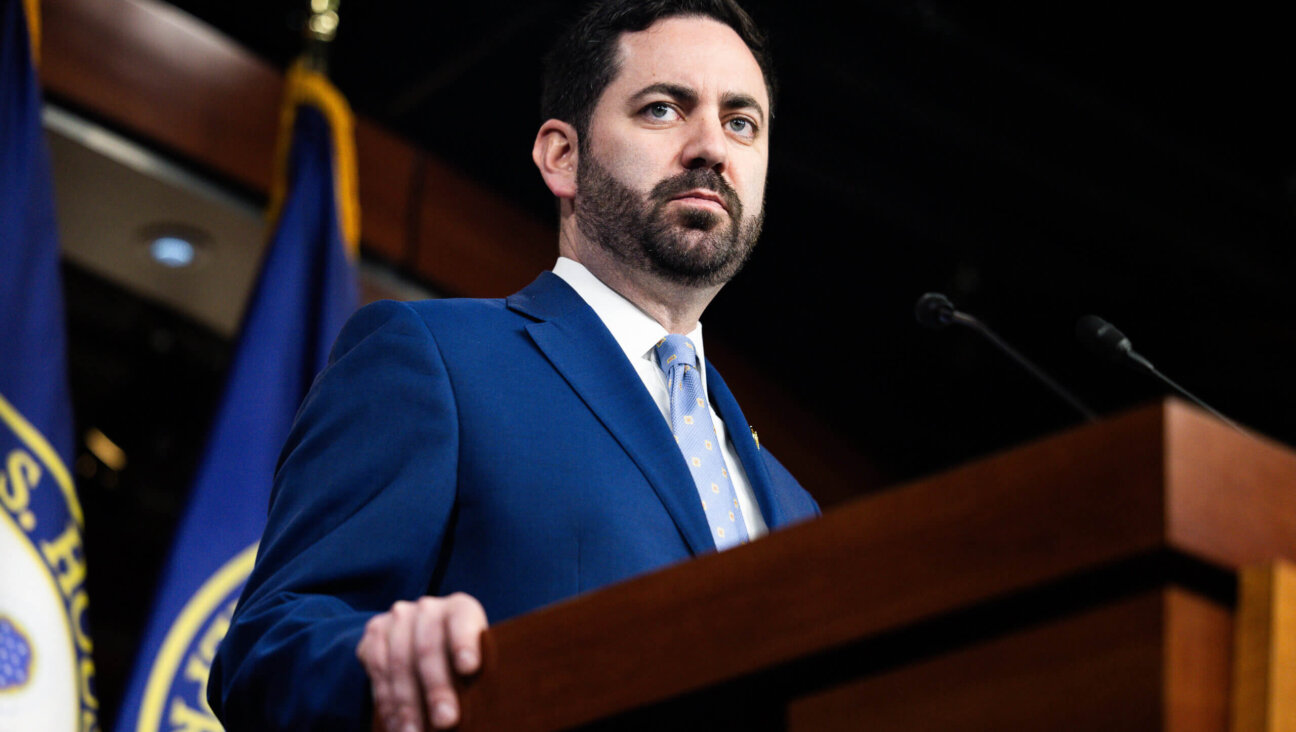It’s Time for the Jewish Megachurch

Image by Lior Zaltzman
Lately, I’ve been speaking at synagogues around the country about emerging trends in 21st century Judaism. I often start with the well-worn joke about a Jewish castaway rescued on a desert island. His rescuers note he’d built not one but two synagogues — why, they asked. “Well,” he replied, “one is the synagogue I go to — and the other is the one I wouldn’t be caught dead in.”
This was the model of many twentieth-century synagogues: defining themselves against one another in terms of movement, class, and background. Fighting within themselves over every ritual variation, and often splintering into “breakaways.” It was certainly the model I grew up with in the 1980s.
Now, almost all mainline denominations are in trouble: Modern Orthodox, Conservative, and Reform. Of course, there are some success stories, scattered around the country, but the predominant story is of a synagogue model in decline, with no clear successor.
Meanwhile, alongside many of our failing and flailing institutions, the megachurch movement continues to grow. There are now over 1,300 megachurches around the country, with an average weekly attendance of about 4,000. (Four thousand! On a regular shabbos!) Most were founded in the last thirty years. Two-thirds are evangelical. Three-quarters are conservative.
Up the road from my hometown synagogue in Tampa, Florida, is one such institution: the Idlewild Baptist Church, which counts over 12,000 members (though, as we’ll see, the membership bar is set low), 22 pastors, and 126 deacons. Parishioners include celebrities from the New York Yankees (who spring-train in Tampa) and Tampa Bay Buccaneers.
But until this week, I never set foot in the place. I drove past it, often scoffing at the name — officially “Exciting Idlewild Baptist Church” — or wondering what they would think of gay, Jewish liberals like me. I imagined lots of glitter, not much gold.
Well, this week, I got over myself. Turns out, there are a lot of things we might learn from these highly successful religio-cultural institutions — and some things we might not. This week, I want to look at three positive lessons — next week, a few negative ones.
1. It’s the Spirituality, Stupid
First, these churches deliver powerful, personal spiritual experiences — which is a primary reason they’re winning over lapsed Catholics and mainline Protestants. The pastors talk directly about their conversion experiences. The service that I went to was a carefully, skillfully choreographed crescendo designed to inspire (and, judging by the enthusiasm of the congregants, successful at doing so). The theology is personal and experiential; you’re meant to talk to God, and hear God talking back. You invite Jesus into your life as a personal savior, and have an intense, emotional relationship with Him.
A thousand details contribute to this experience. At Idlewild, there’s not only a 100-person choir, a full orchestra, and a rock band, but the bass is turned up high, the musical numbers are sequenced like at any good concert, and it’s easy to sing along. The water baptisms — held in a font about 50 feet up from the level of the stage — were sincere, a little weird, and authentically moving. And, sitting behind the sound board, I noticed how every segment was carefully timed and blocked.
Contrast this lively, consciously-designed spiritual theater with the average synagogue service. Unlike the careful design of the megachurch service — and the crisp, 75-minute length — mainstream Jewish services are cobbled together from relics of the past and lame attempts at accessibility. Why, in heaven’s name, do Conservative and Orthodox congregations repeat the heart of the liturgy — and then repeat it again at the “additional” service? Well, Jewish law, tradition, recollection of ancient sacrifices.
Because that really fills the pews.
And why the stultifying readings, recited in monotone, at many Reform temples? Why the sing-song tunes that inspire no one but the cantor? Well, the ritual committee, the musical director, the memory of Debbie Friedman, the older donors. Fine, but you don’t need to pay my speaker’s fee to figure out why “young people” are staying home.
It’s 2015. Every Hebrew word must be transliterated, and preferably projected on a screen. Every part of the service must be reconsidered, and evaluated based on what kind of experience it will create. And services should last an hour. Two hours, tops. Counting the sermon.
There’s a reason the kaddish and the prayers for the sick are the best parts of many services — they’re the only parts people care about. Let’s cut the other parts.
And let’s treat the rabbi the same way. Pastor Ken Whitten, of Idlewild, has small dinners with parishioners several nights a week, and is personally in touch with ailing members. How? Because his time is allocated to the important stuff. The other pastors report to Executive Pastor Brian McDougall, who reports to Pastor Ken. The head pastor is more the President than the CEO. And so he’s available for what he does best: pastoring to his flock.
How could synagogues accomplish such a feat? Well, the key is:
2. Multiple Ways In, but Economies of Scale
Remarkably, in a 75 minute service, Idlewild presented a half dozen theologies. Some of the hymns and messages were New Age — God was called the “I am” and worshipers were encouraged to “live in the Now.” Others were very Old School — Amazing Grace, and an exclusivist message that Jesus is the only way to salvation.
These and more were intermingled without much comment. It seemed clear that there were different messages for different people, and the main service was a kind of religious multiplex.
More broadly, alongside the main service (I’d estimate the crowd at about 1,500), there were over a dozen alternative ones: children-friendly, students, young adults, seniors, and fellowship groups of all sorts. There were three time-slots, which meant that hundreds of people were always milling around the huge lobby (complete with non-Starbucks café). There were missions (some spreading the gospel, some helping the needy) with booths and brochures. Conservative Christianity is supposedly not that inclusive — but Idlewild was one of the most inclusive, pluralistic religious spaces I’ve ever seen. (And welcoming too; I was greeted half a dozen times by volunteers.)
Now, Jews don’t have these kinds of numbers, even in New York. But let’s think big. Suppose JCC’s weren’t barred from holding services, as many are now, and people could affiliate with large, central institutions that were religious, social, cultural, political, and geographically centralized. Suppose three or four synagogues met in one larger space, with different minyanim, different leadership, different ritual styles, but pooling their resources so that a JCC was really a Jewish Community Center, instead of a (non-)shul with a pool. What if half of mainline synagogues closed — which is probably going to happen anyway — and came together into mega-shuls that offered multiple ways in, but benefited from economies of scale?
We’d do it differently, of course. There would be more differentiation and diffusion of leadership. Orthodox synagogues could only participate if the centers were within walking distance of homes, but they probably couldn’t handle coexisting with heretics anyway. I know we wouldn’t be one big happy family — and I suspect Idlewild isn’t either.
But I have to say, just coming to one center with thousands of other people was, itself, inspiring. Not to mention cost-effective. Which brings me to my final point:
3. Money and Membership
Joining Idlewild Baptist Church is, according to the website, “as simple as A-B-C: A, Accept Christ as your personal Savior; B, Be Baptized by immersion after salvation; C, Complete the Starting Point class.”
Wow. This is what synagogue membership should be — not some byzantine, form-filling enterprise that requires a significant financial investment. Our ABC’s would be different, of course, but how about it? A, Agree that you’re in, you’re invested, you care. B, Be recognized publicly for doing so. C, Come to an intro class and see what we’re all about.”
Jewish megachurches should be similarly open. Get ‘em in, give ‘em a spiritual experience that is transformative, and get ‘em on your mailing list. You’ll have time to hit them up for donations later — if not passing the hat at services (shabbos!), then in other ways. And fees for services, like bar mitzvahs and schooling. And a public commitment to tithing.
And donor cultivation. Unfortunately, many Jewish mega-donors seem more interested in Jewish tribal continuity and Jewish nationalism than in actually offering a product (or service) that meets the needs of actual American Jews — most of whom simply do not care about these particularist issues. Most of them are secular, and many are actively hostile to anything that looks like spirituality. Some are openly vulgar.
Well, wake up, mega-donors. If you only support the Judaism you like, then only people like you will show up. And you are in the minority.
Idlewild is a Christian multiplex, with a variety of offerings, theologies, and ways to affiliate. They are dynamic, they believe what they preach, and religion — yes, religion — is at the center of their lives. It won’t be a home for me — I’ll talk about that next week — and places like it are sure easy to mock. But they are winning adherents, while the Jewish community is losing them. Maybe it’s time to stop mocking, and start learning.
Jay Michaelson is a contributing editor to the Forward.

I hope you appreciated this article. Before you go, I’d like to ask you to please support the Forward’s award-winning, nonprofit journalism during this critical time.
Now more than ever, American Jews need independent news they can trust, with reporting driven by truth, not ideology. We serve you, not any ideological agenda.
At a time when other newsrooms are closing or cutting back, the Forward has removed its paywall and invested additional resources to report on the ground from Israel and around the U.S. on the impact of the war, rising antisemitism and the protests on college campuses.
Readers like you make it all possible. Support our work by becoming a Forward Member and connect with our journalism and your community.
Make a gift of any size and become a Forward member today. You’ll support our mission to tell the American Jewish story fully and fairly.
— Rachel Fishman Feddersen, Publisher and CEO
Join our mission to tell the Jewish story fully and fairly.

























